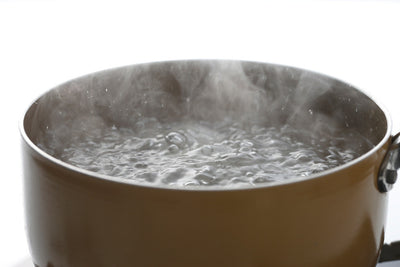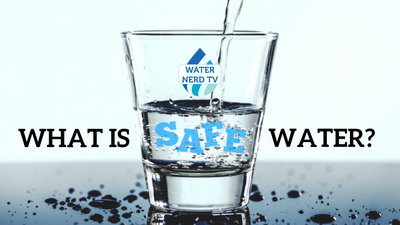Emma Schultz, M.S. | Scientific Contributor
There has recently been a spate of schools testing positive for lead contamination in drinking water across the country, at dangerously high levels. Since the Flint, Michigan water crisis brought lead contamination and lead poisoning into the spotlight in 2015, there has been a push to increase water testing in schools - and rightly so. It’s not likely that high test results are new; it is unfortunately instead likely that this has been an ongoing undetected problem. EPA estimates that 90,000 public schools, as well as half a million child care facilities, are not regulated under the Safe Drinking Water Act due to utilizing a municipal water utility. While these statistics are dated (2002), they are still referenced by EPA. Since the utility is the responsible party for testing water, the school itself is not required to test, unless there are more stringent local laws or they voluntarily choose to do so. Most do not, or if they do, their results may not be reflective of normal lead levels. Water frequently stagnates in school pipes, due to nights, weekends, and summers where water usage is drastically diminished. That stagnation leads to leaching of lead in the school's water, and therefore lead accumulation, when there are lead pipes or lead-containing valves and fittings.
It is important to note that there is no such thing as a safe level of lead in drinking water. It bears repeating: no level of lead is safe, especially when it comes to children, who are most sensitive to lead poisoning. The EPA limit of 15 parts per billion, set in 1991, is much higher than EPA and CDC have admitted is safe (they agree, there is no safe level of lead). In addition, 10% of samples are legally allowed to exceed the 15 ppb threshold without resulting in any utility violations. In contrast, The American Academy of Pediatrics proposes that lead in school drinking water should not exceed 1 ppb.
Lead Contamination In Nashville, Tennessee Schools
One city that recently made headlines for lead contamination in public schools is Nashville, Tennessee. Schools were tested for lead during the summer of 2017. Examples of frighteningly high lead levels are as follows (note, these are individual tap results):
- Park Avenue Elementary: 170 ppb
- Spectrum Academy: 349 ppb
- Chadwell Elementary: 272 ppb
- Cole Elementary: 106 ppb
- Neelys Bend Elementary: 115 ppb
In addition, 11 fountains exceeded 5 ppb of lead at McMurray Middle’s annex, and 13 fountains at Hattie Cotton Elementary had greater than 5 ppb. Haywood Elementary had very high lead averages, with 26 drinking fountains testing greater than 5 ppb of lead, 9 of which were over 15 ppb.
Metro Nashville Public Schools (MNPS) reported that any tap showing lead levels above 15 ppb was subsequently disconnected, but shutting off one tap does not solve the problem. Public schools are often old, and old schools tend to have an old infrastructure, which includes lead-based plumbing. While MNPS does not state the age of their school buildings, several of the schools also made headlines this winter for being unable to heat their classrooms during a prolonged cold spell, with classroom temperatures dipping down to a frigid 46°. This aging infrastructure is putting students at risk in multiple way. Regarding lead in drinking water, MNPS has remained in the news because of a leaked recording where Executive Director of Facilities Dennis Neal plotted with staff to bypass the filtration systems on several dozen lead-filtering “filtration stations” that were installed in some of the more affluent schools (courtesy of parent donations) following the lead scare. Neal was concerned about the high cost of continuously filtering water across schools with high lead levels, and stated “People keep wanting these bottle fillers, but they are adamant about them being filtered. I’m saying we cannot support it.”
After the recording was leaked, Neal was put on administrative leave while MNPS investigated; he has since resigned. Issues remain with lead levels in schools though, and parents have every right to be concerned. MNPS District Spokesperson Michelle Michaud, in an interview with CBS This Morning, stated that filters aren’t actually needed, because the school district has reduced lead levels to under 15 ppb, and then claimed that filters can reduce the amount of lead in water no further than that. "Those filters are doing a good thing," Michaud said. "They are making the water taste better, but they are not filtering out more lead." This is in contrast to the fact sheet from one of their filtration providers, which states that lead levels will be reduced to 10 ppb or less. Hydroviv filters, in comparison, have treated water with 200 ppb of lead, reducing the lead in water to an output of 0 ppb.
Other Articles We Think You'll Enjoy
Water quality data for residences in Nashville, TNWhy are so many schools testing positive for lead?
How does lead enter tap water?





